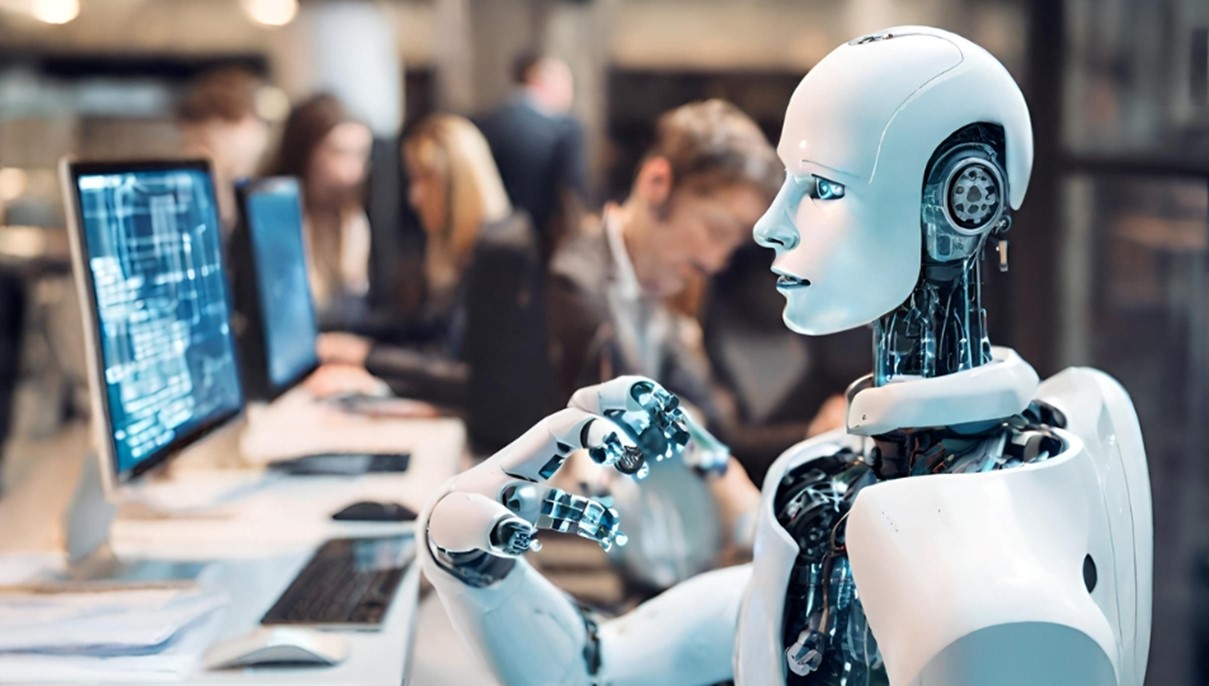Artificial Intelligence and Jobs: Threat or Opportunity?
Artificial intelligence (AI) is becoming an integral part of our daily lives and is also affecting the labor market. The discussion about its impact on employment is more than current: Can AI replace human work, or on the contrary, does it create new job opportunities? In this article, we will look at both sides of this issue.

A threat to jobs
One of the biggest fears associated with AI is that automation can replace routine and manual tasks. Technologies such as machine learning, robotics or automated systems can perform repetitive activities with greater accuracy and efficiency, which threatens certain job positions.
Industries most at risk from automation
- Manufacturing: Robots and automated production lines can handle physical tasks such as assembly, packaging or quality control, reducing the need for human labor.
- Services: Chatbots and virtual assistants already provide customer support today, they can process simple questions, orders or solve customer problems.
- Transportation: Autonomous vehicles, including taxis, trucks, or even delivery drones, can significantly reduce the demand for drivers.
This trend may cause unemployment to grow in some sectors, especially among low-skilled workers who will have to adapt to the new reality.
Opportunities created by AI
On the other hand, AI does not mean only the loss of jobs. It is also a driving force for new opportunities and growth in other areas.
New jobs
- Technologies and Development: As AI advances, there is a demand for software development specialists, data analysts, machine learning experts, and AI ethics.
- Education and Training: With constant technological changes, there is a need to provide training and educational programs to equip workers with new AI and IT skills.
- Innovation: AI contributes to the development of new products and services. For example, in healthcare, AI helps diagnose diseases, leading to new forms of treatment and jobs in the industry.
Adapting to change: The key to success
In order to harness the full potential of AI and minimize the negative consequences, it is essential to adapt. This includes focusing on education, retraining and strengthening cooperation between different sectors.
Education and retraining
Investing in upskilling workers is key. Companies and educational institutions should offer programs focused on digital skills, working with AI and the ability to adapt to new technologies.
Cooperation between sectors
To effectively manage the changes brought about by AI, collaboration between sectors is essential. A joint strategy will help ensure that the future labor market is sustainable and beneficial for both employees and employers.
Adapting to change: The key to success
In order to harness the full potential of AI and minimize the negative consequences, it is essential to adapt. This includes focusing on education, retraining and strengthening cooperation between different sectors.
Education and retraining
Investing in upskilling workers is key. Companies and educational institutions should offer programs focused on digital skills, working with AI and the ability to adapt to new technologies.
Cooperation between sectors
To effectively manage the changes brought about by AI, collaboration between sectors is essential. A joint strategy will help ensure that the future labor market is sustainable and beneficial for both employees and employers.
Conclusion
Artificial intelligence is a double-edged sword – on the one hand, it can lead to the loss of traditional jobs, but on the other hand, it opens the door to innovation and the creation of new professions. The key to success is flexibility and readiness for change.
By investing in education and collaboration between all stakeholders, we can ensure that artificial intelligence is not seen as a threat, but as an opportunity for a better future.
